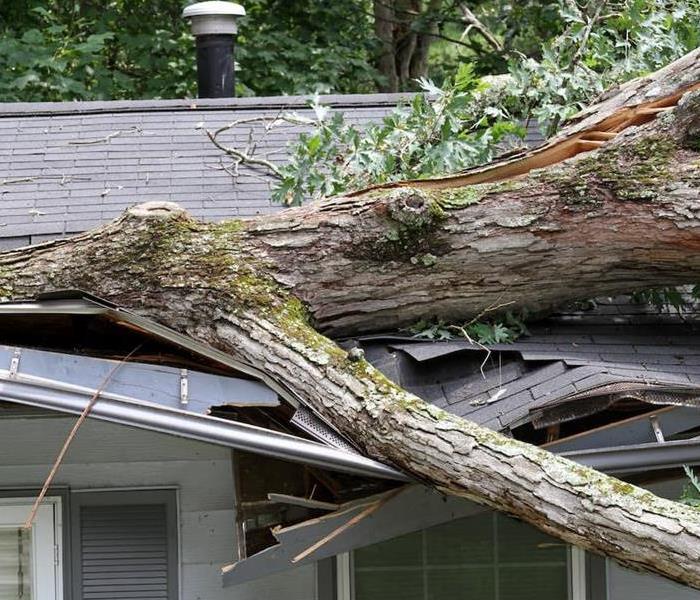What Is Considered Storm Damage to a Roof?
1/13/2023 (Permalink)
When severe weather strikes, the damage to your house can be extensive. Without a proper assessment, it's impossible to know the extent of the damage. One area that is particularly vulnerable to storm damage is the roof. Knowing what constitutes storm damage to your roof can help you understand what kind of repairs you need to make and how urgent the situation is.
What Are the Signs of Storm Damage?
When assessing storm damage to your roof, several indicators should be considered. Hail damage is one of the most common indicators of roof damage, as hail can cause dents or punctures in shingles. Wind damage can also be a sign, as strong winds can easily tear off or lift shingles. Additionally, look for signs of water damage, such as water stains or water leaking inside your home.
It's also important to inspect the interior of your home for signs of roof damage, such as cracked or bubbled paint, stained ceilings and walls, and musty smells. If you notice any of these signs, it's important to call for help as soon as possible.
Some signs to look out for include:
- Missing or broken shingles
- Evidence of water infiltration
- Visible dents or gouges in the roof
- Exposed nails or other hardware on the roof surface
- Loose or missing seals around vents, chimneys, and skylights
- Trees or other debris that have fallen on the roof
- Flashing that has become loose or detached.
Remember that some of these indicators may not be immediately apparent. That is why it's important to have a trained professional evaluate your roof after a storm event.
What to Do after Storm Damage
If you suspect that your roof has suffered storm damage, it's essential to take action immediately. Even if you think the damage is minor, waiting too long can lead to more costly repairs.
The first step is to contact a qualified roofing contractor who can assess the damage and provide an estimate for repairs. Make sure the contractor has experience in dealing with storm-damaged roofs, as they will be able to recognize potential issues that are not always obvious.
Once the damage has been assessed, the contractor can recommend repairs or replacement of the affected areas. If repair is necessary, they can estimate the cost of the repairs.
In some cases, however, a full roof replacement may be necessary. If this is the case, getting several estimates from different contractors is crucial to ensure you get the best deal.
Repercussions of Unrepaired Storm Damage
If left unaddressed, storm damage can further damage your home's roof. Fallen trees and debris can cause holes in the roof, allowing water to seep in and accumulate, which can increase the risk of mold growth. Mold can spread quickly and cause health issues such as respiratory and allergen problems to those living in the home, even if they are not directly exposed to the mold.
In addition to health issues, mold can cause further structural damage leading to costly repairs down the line. Strong storm winds can cause shingles to erode, leading to water damage in the attic and other areas. Water damage can also cause roof deterioration, leading to additional repairs and even replacement if not taken care of promptly.
It's important to contact a professional roofing company as soon as possible after a storm to inspect and assess the damage and make any necessary repairs.
At SERVPRO of South and Northwest Grand Rapids, we're experienced in helping homeowners assess and repair storm damage. We use the latest technology to quickly and efficiently inspect your roof, evaluate the damage and recommend a course of action. If repairs are necessary, our team of professionals will get the job done quickly and affordably.
Don't let storm damage go unchecked; contact SERVPRO of South and Northwest Grand Rapids at (616) 662-9700 with any questions; we're here to help!




 24/7 Emergency Service
24/7 Emergency Service
